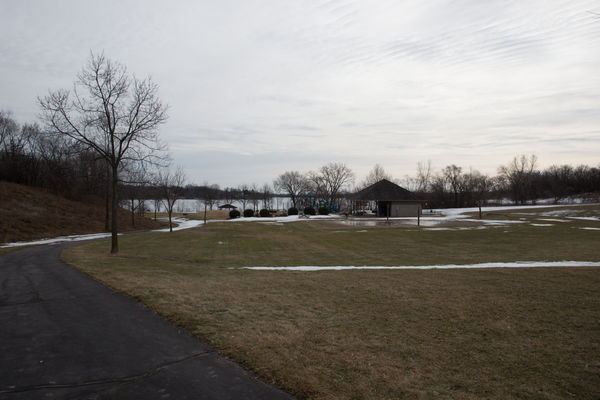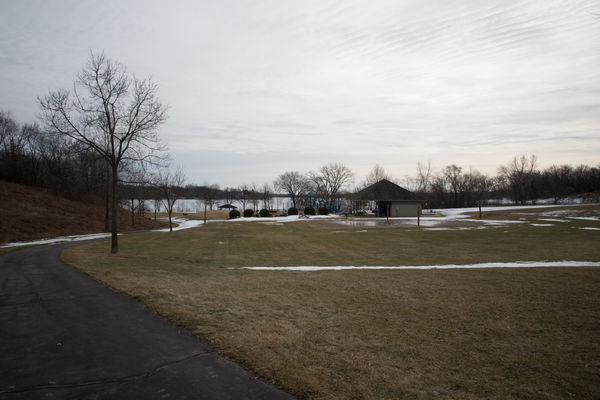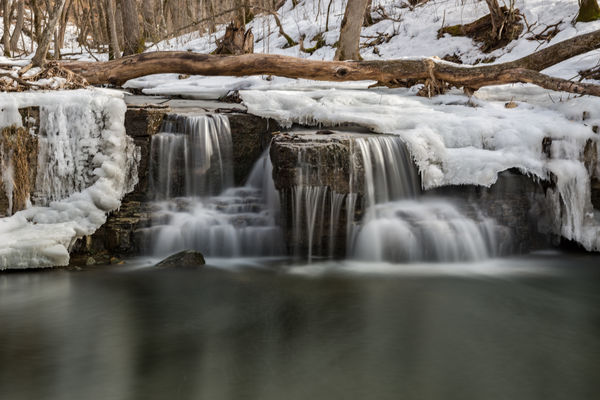Filter critique
Feb 16, 2017 14:56:13 #
I bought a couple of cheap ND filters that seem to work far better than I expected so I'm wondering if anyone can point out issues they see in the filtered version. The vignetting is obvious to me but I'm not seeing any other issues. I will confess I am not a pixel peeper so I'm hoping for better analysis from some of you. The histogram's are a little different but I don't know to interpret ( with filter shadows are a little lower and highlights a little higher than non filter). Shutter speed was the only change between the images. So what say you, did I luck out? I am intentionally not id'ing which is which, though exif data will id the longer exposure. :-)
Thanks!
Don
Thanks!
Don
Feb 17, 2017 06:16:19 #
I don't see the vignetting. I see that the upper left corner of the images is a little darker but that's just how the sky was. I don't see the same darkening in the upper right hand corner. There's a overall slight difference in exposure. That's just my take on it. Maybe other people will analyze it better than I.
Why are you using an ND filter for this scene? Is it a graduated ND filter?
Why are you using an ND filter for this scene? Is it a graduated ND filter?
Feb 17, 2017 08:57:00 #
The filter is 1 of a pair I bought at amazon for 40 bucks. This is a round 6 stop ND filter (glass) brand of "ICE" that will be used mostly at waterfalls. This scene was only a filter test...suppose I could have done a better job selecting and comping. I was thinking I wanted some highlight, shadow, color and the lens to be zoomed to shortest focal length. Other than lightroom converting raw to jpeg there is zero processing on either image. I Will attach a 3rd image, it's been post processed and the 11 stop filter was used, certainly not the magenta mess I was expecting!
CO wrote:
I don't see the vignetting. I see that the upper left corner of the images is a little darker but that's just how the sky was. I don't see the same darkening in the upper right hand corner. There's a overall slight difference in exposure. That's just my take on it. Maybe other people will analyze it better than I.
Why are you using an ND filter for this scene? Is it a graduated ND filter?
Why are you using an ND filter for this scene? Is it a graduated ND filter?
Feb 17, 2017 13:54:43 #
amfoto1
Loc: San Jose, Calif. USA
paddlerdon wrote:
I bought a couple of cheap ND filters that seem to... (show quote)
The purpose of an ND filter is to allow longer exposures or larger apertures than usually possible with the range of ISO sensitivity of digital cameras.
Longer exposures made possible with ND are typically used to create deliberate motion blur effects... such as making moving water look "creamy" or to make moving vehicles and even pedestrians "disappear" from a city scene.
Larger apertures made possible with ND are often used for portraits where heavy background blur is wanted, among other things.
Your first two "test shots" don't really illustrate either of these typical uses for this type filter. About all that these tests show is that under fairly easy conditions the filter appears to work reasonably well and not degrade image quality significantly.
You should look for subjects where the filter is more purposeful, such as your third shot.
You also should test the filters in more challenging lighting conditions. Considering the price, they are probably uncoated or single coated, so more likely to have flare issues if there are any strong light sources. The lighting in all your tests is rather muted and "easy" for a filter.
It's hard to say from these particular shots if the filter is causing some image tints. Usually it's more of a problem with variable ND, than with single strength filters such as these. Auto White Balance or post processing also might correct any tint the filter might cause, too.
An ND, especially a strong 11 stop, also might mess with your autofocus. You may need to pre-focus without the filter in some situations, then install the filter being careful not to bump things out of focus.
Feb 18, 2017 01:55:28 #
Side note:
Forgetting your original ND filter question, I see one heck of a lot of chromatic aberration! Not really any in the center but the outer portions are very noticeable.
Forgetting your original ND filter question, I see one heck of a lot of chromatic aberration! Not really any in the center but the outer portions are very noticeable.
Feb 18, 2017 08:40:00 #
Yes genorkus there is a lot of chromatic aberration, you see it in both #1 and #2 right? It's quite a disappointment in the lens. (lightroom seems to be able to remove it quickly) Thanks for taking the time to look and reply. Can I assume you didn't see anything else then? Also thank you for NOT providing me with info on how I am suppose to use an ND filter! ;-)
Don
Don
GENorkus wrote:
Side note:
Forgetting your original ND filter question, I see one heck of a lot of chromatic aberration! Not really any in the center but the outer portions are very noticeable.
Forgetting your original ND filter question, I see one heck of a lot of chromatic aberration! Not really any in the center but the outer portions are very noticeable.
Feb 18, 2017 13:41:37 #
paddlerdon wrote:
I bought a couple of cheap ND filters that seem to... (show quote)
Don, you claim to see vignetting. Are you sure that is what it is? I only see something like that on the left side of the photos.
Many times with a wide angle shot, you'll get a partial change or darkening of the side opposite of the light source, (in this case the sun). Your photos look sort-of like the sun is on the right side. The reason for this is because it is naturally brighter on the light source side. Often that makes the dark side look like vignetting and it really isn't.
The other big problem, many don't seem to care about and often just accept it as a "normal" problem... (if they even notice it at all), is the shift in white balance across the sky.
It might help you if you take several other wide angle shots with the light source at different locations in the sky. See if that confirms your vignetting thoughts.
Feb 18, 2017 13:53:19 #
paddlerdon wrote:
Yes genorkus there is a lot of chromatic aberration, you see it in both #1 and #2 right? It's quite a disappointment in the lens. (lightroom seems to be able to remove it quickly) Thanks for taking the time to look and reply. Can I assume you didn't see anything else then? Also thank you for NOT providing me with info on how I am suppose to use an ND filter! ;-)
Don
Don
From what I've been told:
A poorly designed or "cheap" lens is the main reason for chromatic aberration CA, then again figure the lens could be the problem also.
CA is something a "full size" lens without proper coatings designed in it, will tend do more-so if used on a crop sensor camera. I've never really checked this out since my own use doing this, has not been a major problem. If you're into the ultimate, use a crop sensor lens on a crop camera and a full size on a full size sensor.
Feb 19, 2017 10:53:28 #
Thanks Alan, I don't really need a lesson on ND filters but I did glean a tidbit from your reply. Flare, yes that was a good comment and you're right these filters do have some flare. I did a little testing while shooting this mornings sunrise, the 6 stop has a little, the 11 stop probably has more than I can tolerate! The good news is the lens itself didn't exhibit any!
amfoto1 wrote:
The purpose of an ND filter is to allow longer exp... (show quote)
If you want to reply, then register here. Registration is free and your account is created instantly, so you can post right away.





